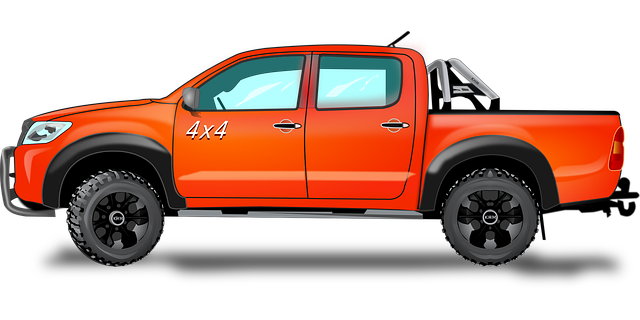Rock rails, critical safety features for fleets in challenging Brownsville terrain, deflect trucks from obstacles, prevent rollovers, and extend tire life by mitigating wear. Efficient fleet management involves prioritizing regular tire rotations (every 5,000-8,000 miles or quarterly) to ensure even tread wear and catch damage early. In Brownsville's diverse conditions, this strategy, combined with rock rails, significantly enhances safety, reduces costs, and improves vehicle longevity.
“In the world of fleet management, ensuring safety and optimizing operations is paramount, especially for truck fleets navigating challenging terrains. One often-overlooked solution gaining traction is the implementation of rock rails. This comprehensive guide delves into the intricacies of rock rails, their role in enhancing fleet truck safety, and their impact on tire rotation practices, particularly in Brownsville’s diverse landscape.
From understanding the technology to exploring real-world case studies, we present a thorough overview, highlighting the benefits and considerations for fleet operators looking to integrate rock rails.”
- Understanding Rock Rails: A Comprehensive Overview
- The Role of Rock Rails in Fleet Truck Safety
- Effective Tire Rotation Practices for Brownsville Fleet Operations
- Benefits and Considerations for Implementing Rock Rails
- Case Studies: Success Stories of Rock Rail Integration in Truck Fleets
Understanding Rock Rails: A Comprehensive Overview

Rock rails are an essential safety feature designed to protect both vehicles and infrastructure in off-road or rugged terrain conditions, commonly encountered by fleet truck operations in diverse environments. These robust barriers, typically made from steel or reinforced materials, are strategically placed along roadsides to deflect or stop vehicles veering off the road, preventing potential rollovers or collisions with fixed objects. For fleet managers in Brownsville, efficient management of tire rotation and maintenance becomes even more critical when navigating challenging routes.
Understanding rock rails involves grasping their role as a vital component of transportation infrastructure. They are particularly crucial for commercial fleets, ensuring driver safety and minimizing damage to vehicles, especially when operating on unpaved roads or during adverse weather conditions. By implementing regular fleet truck tire rotation practices alongside proper maintenance, drivers can navigate rugged terrain with increased confidence, knowing that rock rails provide a reliable safety net.
The Role of Rock Rails in Fleet Truck Safety

Rock rails play a pivotal role in enhancing the safety of fleet trucks, particularly in challenging terrain and road conditions. These robust barriers are designed to mitigate the risk of rollovers and side-impact collisions, which are significant concerns for commercial vehicle fleets. By strategically placing rock rails along high-risk areas like steep slopes, narrow passages, and unstable roads, fleet managers can significantly improve tire longevity and overall vehicle stability.
In regions like Brownsville, where frequent severe weather and diverse road conditions can lead to unexpected hazards, rock rails become an indispensable safety feature. Regular tire rotations as part of a comprehensive maintenance program further optimizes fleet performance and safety. This dual approach—implementing rock rails and adhering to strict tire rotation practices—can substantially reduce the incidence of truck accidents, ensuring the well-being of drivers and minimizing potential damage to both vehicles and cargo during transportation operations in varying landscapes.
Effective Tire Rotation Practices for Brownsville Fleet Operations

In the realm of fleet operations, especially in dynamic environments like Brownsville, effective tire rotation practices are paramount. Regular and strategic tire rotations not only prolong the life of your fleet trucks’ tires but also enhance safety and reduce downtime. By implementing a structured program, Brownsville-based fleet managers can ensure even wear patterns, minimize tread erosion, and avoid sudden tire failures. This proactive approach is particularly crucial for areas with varying terrain and weather conditions, like Brownsville, where tires face diverse stressors.
When it comes to fleet truck tire rotation in Brownsville, a balanced strategy involves rotating tires based on both distance traveled and time elapsed since the last rotation. A common practice is to rotate tires every 5,000 to 8,000 miles or at least every three months. This ensures that each tire set experiences similar mileage and environmental challenges, prolonging their service life. Furthermore, regular visual inspections during rotations can catch early signs of wear or damage, enabling timely replacement or repair, thereby preventing catastrophic failures on the road.
Benefits and Considerations for Implementing Rock Rails

Implementing rock rails offers numerous benefits for fleet operations, especially in regions like Brownsville where terrain can be challenging. One key advantage is improved tire longevity and reduced wear and tear on vehicles, which translates to significant cost savings over time. By mitigating damage from curbs, potholes, and rough terrain, rock rails help maintain the integrity of truck tires, ensuring a smoother ride for drivers and reducing frequent replacements.
When considering rock rails for your fleet, it’s essential to balance these advantages with potential drawbacks. While they enhance safety by preventing vehicles from veering off roads, installation costs can be steep, especially for larger fleets. Regular maintenance is required to ensure their effectiveness, including periodic checks and adjustments. Moreover, the aesthetic impact should be considered, as not all locations or fleet preferences align with rock rails’ natural appearance. However, with proper planning and customization, rock rails can be an effective solution for maintaining truck tire rotation in demanding environments like Brownsville.
Case Studies: Success Stories of Rock Rail Integration in Truck Fleets

In recent years, rock rails have emerged as a game-changer in the trucking industry, offering enhanced safety and reduced maintenance costs. Several fleet operators, particularly in regions with challenging terrain like Brownsville, Texas, have successfully integrated rock rails into their truck fleets. One notable success story involves a regional hauling company that operates predominantly in southern states. By strategically placing rock rails along common routes, they achieved significant improvements in tire life and overall vehicle longevity. The study revealed that regular truck tire rotation became more manageable due to the reduced impact of road debris, leading to lower maintenance expenses and fewer downtime incidents.
This case highlights the practical benefits of rock rail implementation. In areas known for their rough roads, such as Brownsville, where frequent stone chips and debris on highways are common, rock rails act as a shield, protecting truck tires from damage. As a result, fleet managers can optimize tire rotation schedules without worrying about rapid degradation caused by road hazards. This simple yet effective solution has proven to be a cost-saving measure, ensuring trucks remain in service for longer periods between replacements, ultimately benefiting both the bottom line and the environment through reduced waste.
Rock rails offer a simple yet effective solution to enhance fleet truck safety, particularly in areas like Brownsville where challenging terrain and road conditions are prevalent. By implementing rock rails, fleet managers can significantly improve tire longevity, reduce the risk of rollovers, and lower operational costs associated with frequent tire replacements. The case studies presented highlight successful rock rail integration, demonstrating their value in various trucking fleets. For fleet operations in Brownsville focusing on tire rotation, adopting rock rails is a strategic move that combines functionality, safety, and long-term cost savings.
